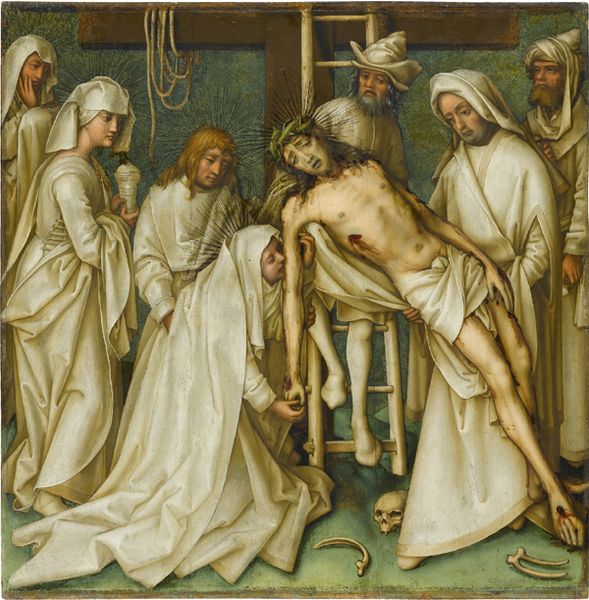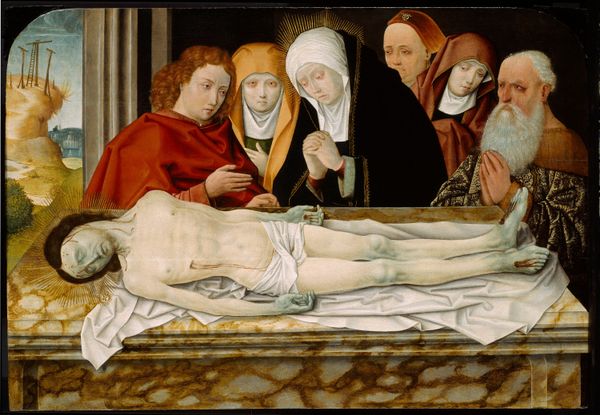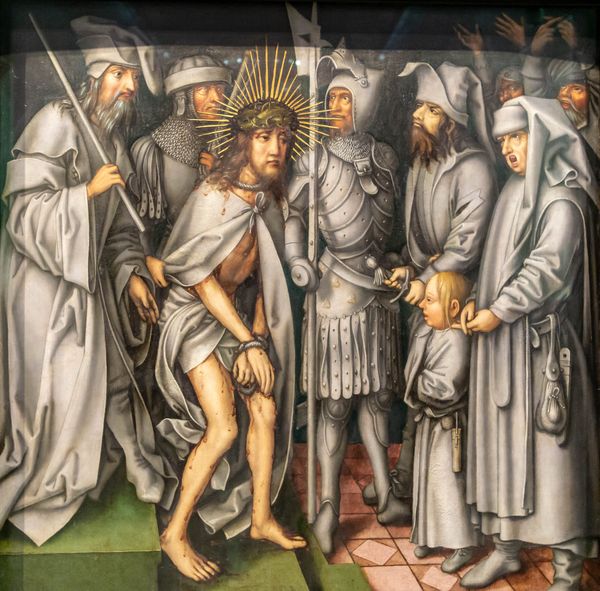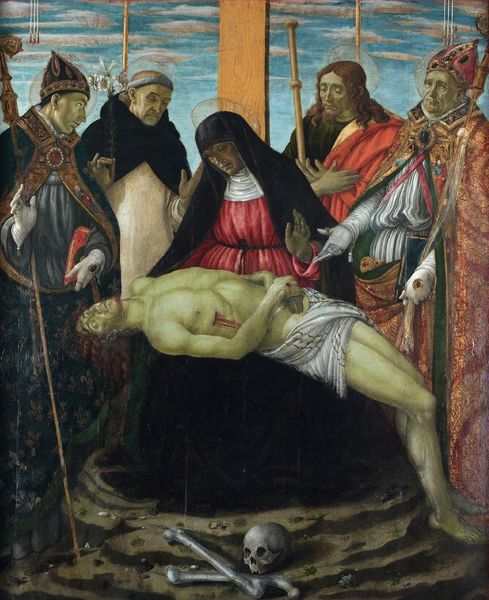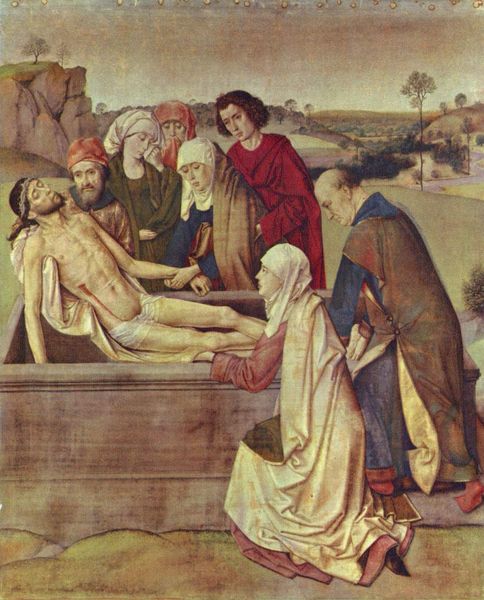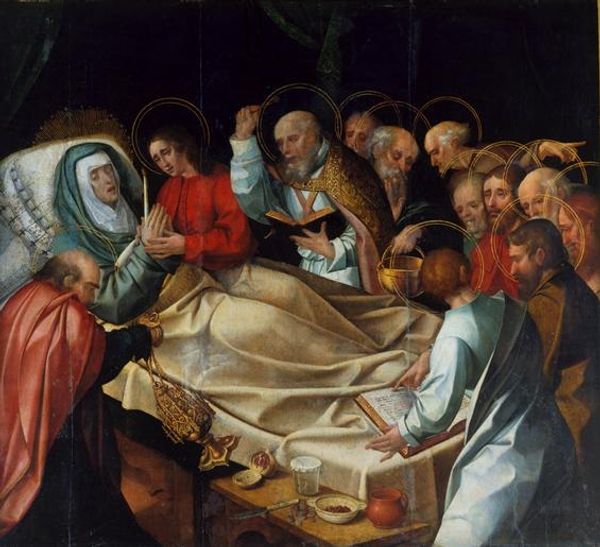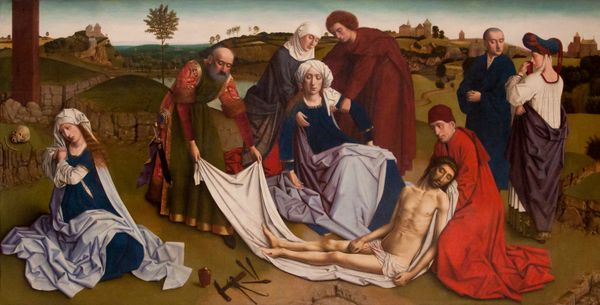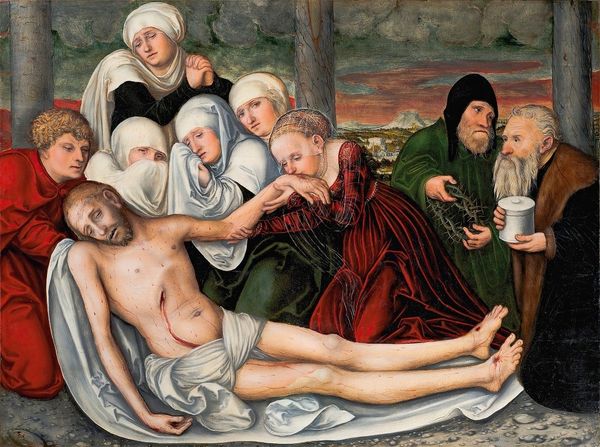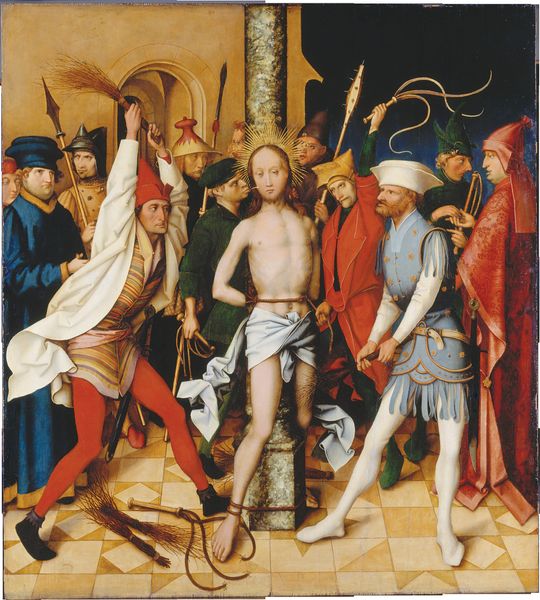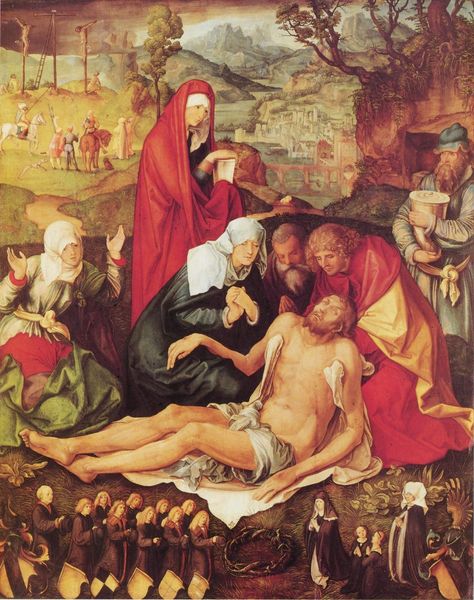
Lamentation of Christ (Grey Passion-11) 1500
0:00
0:00
hansholbeintheelder
Staatsgalerie Stuttgart, Stuttgart, Germany
#
prophet
#
strong focal point
#
possibly oil pastel
#
charcoal art
#
oil painting
#
portrait head and shoulder
#
framed image
#
underpainting
#
painting painterly
#
portrait art
#
fine art portrait
Copyright: Public domain
Hans Holbein the Elder created this arresting panel painting of the Lamentation of Christ at the cusp of the Renaissance in Germany. Painted in grisaille, or shades of grey, the image is not a celebration of Christ's triumph, but a stark, almost brutal, depiction of human suffering. Holbein was working during a time of enormous social and religious upheaval. The Protestant Reformation was brewing, challenging the established Catholic Church. "Lamentation" captures a moment of intense grief and vulnerability, the kind felt by many during this period of religious transition. The figures surrounding Christ are not idealized saints, but people marked by sorrow, their faces etched with lines of anguish. Holbein emphasizes the human aspect of the divine tragedy. Notice the way Holbein avoids traditional representations of Christ's divinity. Instead, he presents us with a body bearing the marks of violence. This directness is a powerful expression of human empathy. By focusing on the raw emotion of loss, Holbein invites us to confront the painful realities of our shared existence.
Comments
No comments
Be the first to comment and join the conversation on the ultimate creative platform.
